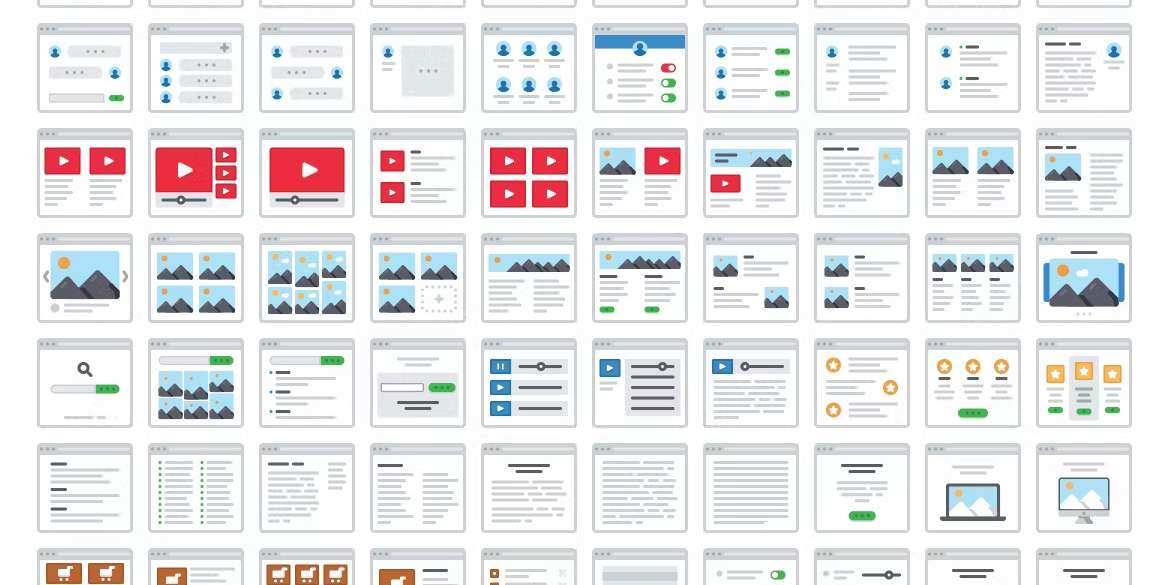Using customer feedback to refine a startup's brand presence effectively gives the business a strategic advantage. Most companies need to improve at refinement and test and iterate on a single design.
Take a look at the typical way an agency sells brand development. First, they assess your needs and requirements in the competitive landscape. They then present you with three options and ask you to refine from a single choice.
This assumes that this final choice enhances your brand online, and they leave you to run with it until you find out it isn’t the right fit. When using customer feedback to refine your startup brand presence, consider the following steps:
1. Collect Feedback
- Surveys: Implement surveys to measure customer satisfaction, loyalty, or advocacy. Use these to gain insights into specific aspects of your product, service, or brand. Use tools like Hubspot’s powerful Service Hub to distribute these surveys alongside your marketing efforts.
- Social Media: Monitor social media platforms for unfiltered feedback. Engage in conversations, run polls, and watch for brand mentions. HubSpot’s Marketing Hub has a great built-in social media tool that can track engagement and help monitor brand performance.
- Customer Service Interactions: Use feedback from customer service inquiries and complaints as valuable data points. Share what you learn in your social media channels to raise brand awareness.
2. Analyse Feedback
- Quantitative Analysis Measures and interprets numerical data from surveys to calculate key performance indicators (KPIs), such as customer Satisfaction (CSAT), Net Promoter Score (NPS), or Customer Effort Score (CES). These play an essential role in increasing brand awareness.
- Qualitative Analysis: Look for recurring themes or sentiments in customer comments and reviews to understand their perceptions and experiences. Use these themes to build hypotheses to experiment further with your audience.
3. Identify Key Insights
- Understand Customer Values: Determine what your customers value, need, want, and dislike. As well as how they perceive your brand compared to competitors. This is critical to building brand awareness and word of mouth.
- Discover Emotional Stories: Identify and write powerful and emotional customer stories. Use them to showcase the impact of your product or service to your broader audience. This builds trust and loyalty, creates strong brand awareness, and curates a powerful brand story.
4. Implement Changes
- Refine Brand Elements: Use customer insights to adjust your brand's visual identity, messaging, and experience to better align with customer expectations. Our product REVEAL is for UX, PLG and website and platform optimisation and can help with this.
- Innovate and Develop: Innovate and develop new product features or services that meet your customers' identified needs and preferences.
5. Test and Validate
- Brand Perception Surveys: Conduct brand perception surveys to preview how customers and other stakeholders perceive changes to your brand. Use these to write blog posts, an essential part of your search engine marketing strategy.
- A/B Testing: Test different brand elements with a segment of your audience to see which variations perform better. Understanding what is important to potential customers plays an integral part in determining the success of your brand's online presence.
6. Communicate and Showcase
- Share Changes: Communicate how customer feedback has led to specific changes, reinforcing the value of customer input. This is a fantastic way to measure brand awareness.
- Promote Success Stories: Use positive feedback and success stories in marketing materials and social media posts to build trust and attract new customers.
7. Ensure Consistency
- Brand Guidelines: Develop and implement brand guidelines to ensure consistency across all customer touchpoints and interactions. Make them easily accessible so that when 3rd parties use your brand elements, they are always used correctly.
- Regular Reviews: Regularly review and update brand touchpoints to maintain consistency and relevance.
8. Foster a Customer-Centric Culture
- Customer-Centricity: Emphasise the importance of customer feedback in your company culture. Ensure that it is a crucial driver for all branding decisions. Being customer-centric means listening and not forcing your customers to adopt you but cohesively working with the client base and wider audience to nail it.
That concludes our eight top tips on using customer feedback to refine your brand identity, but which brands have successfully used it, and what can we learn?
What brands have successfully used customer feedback to improve their image and reputation?
Several brands have successfully used customer feedback to improve their brand image and reputation. Here are some examples:
1. Amazon
Amazon is known for its strong focus on customer feedback. It uses customer reviews, ratings, comments, and feedback to improve its products and inform its development. It also uses customer feedback to inform its pricing and inventory management decisions.
2. Starbucks
Starbucks uses customer feedback to inform its menu development and improve its store experience. It also uses customer feedback to inform its marketing and promotional strategies. Starbucks's program, "My Starbucks Idea," collected over 300 ideas from its website and implemented them in Starbucks stores worldwide.
This initiative resulted from constantly listening to their customers and making necessary changes.
3. Uber
Uber uses customer feedback to improve its app interface, driver and passenger matching algorithms, and overall service quality. It also uses customer feedback to inform its pricing and promotions strategy. Uber uses in-app feedback for drivers and customers to request real-time feedback, with a rating system that connects riders with drivers.
This feedback loop helps Uber ensure that only the best drivers stay on the road and that customer concerns are addressed.
4. Netflix
Netflix uses customer feedback to improve its content offerings and user experience. While not explicitly mentioned in the search results, Netflix is known for its sophisticated algorithms that use viewer data to recommend shows and movies, a form of indirect customer feedback.
5. Burger King
6. Timberland
They encourage customers to write reviews and provide feedback through a button on their web pages, which has helped them move from guessing what customers need to know their preferences.
7. Nordstrom
Nordstrom is known for being up-to-date with customer expectations and has made it easy for users to leave reviews about its brand and service. Its focus is on delivering a customer-centric experience informed by the feedback it receives.
8. Hyatt
Hyatt Hotels has built its brand around customer feedback, which helps it understand what its users want and when they want it. They have a robust feedback-gathering process that informs their service delivery.
These examples demonstrate how companies across various industries use customer feedback to refine their brand image and reputation, improving customer experiences and business growth.
Conclusion
Refining a start-up's brand presence using customer feedback is a dynamic process that involves listening, analysing, adapting, and communicating. By valuing customer input and focusing on your target audience, you can make it a central part of brand development.
Start-ups can create a brand identity that truly resonates with their audience and stands the test of time.
Need help to define your startup's brand presence? Talk to our team, who would be glad to help. Use the button in the menu to book some time.




